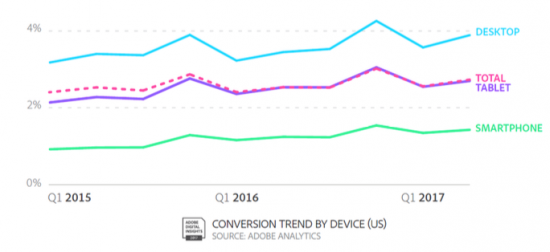Boo! Did I scare you?
Happy Friday the 13th; get ready for a spooky look into data from the beyond. We’re going to talk about new hiding places for website data (and how you can coax out those friendly – or frightening – stats), where to review mysterious mobile marketing statistics and how to shine the light on elusive customer information through smart email campaigns.
We’ll wrap up with a walk in the woods… but don’t worry, there’s nothing lurking in those shadows.
Or is there?
Read on to find out…
Mobile Marketing Statistics Compilation
Mobile internet access surpassed desktop use a few years ago, making it an obvious area of focus for marketers. Building upon that basic knowledge can help you understand your target audience better and create smart strategies that work to your advantage.
To make discovering mobile marketing statistics easier, Smart Insights compiled data about key questions you may be curious about, like how much time users spend on mobile media and whether people are more likely to open an app or go to a mobile site (nearly 90 percent of mobile user time is spent in apps).
One notable category of statistics listed are e-commerce conversion rates. Though mobile dominates for actual time engaging with media, it’s very low for conversions – an important distinction to make for anyone hoping to increase revenue through mobile initiatives.

Read about more mobile marketing statistics here.
Google’s URL Inspection Tool Now Available for all Users
Two weeks after releasing its new URL inspection tool to a small group of lucky users, Google announced the device is now available for everyone, SearchEngineLand reported. The tool shows you how the search engine views a specific URL and provides data that people previously could only guess at.
URL inspection tool is now available for everyone! You can start inspecting your URLs by visiting the new Search Console – https://t.co/uoaCWUIrap pic.twitter.com/mVf7SNi7U9
— Google Webmasters (@googlewmc) July 10, 2018
When you enter a URL from your website, Google will provide details like:
- The last date that URL was crawled by Google.
- What Google found during that crawl, including any errors.
- The canonical URL for that page.
The tool also shows whether the page was indexed. If it was, it also provides information about enhancements on the page, like linked AMP version or rich results. If it wasn’t, it shows information about noindex meta tags and other information related to why it wasn’t indexed.
Being able to review this data should help people update their websites in ways that lend to better ranking.
Get more information about the update here.
Want Real Email Results? Stop Focusing on the Open Rate
When analyzing your email marketing campaign results, it can be tempting to revel at the open rate. Marketing Land contributor Ryan Phelan, however, encourages marketers to look beyond this single statistic and instead dive into the meat of your results: what readers actually clicked on.
Sure, the open rate is important, but don’t lose sight of what this actually is: an introductory step toward achieving your actual key performance indicators, which are probably clicks or conversions.
Getting your readers to click on links within the body of your emails should do two things:
- Allow them to engage with your brand more.
- Tell you what they’re actually interested in.
By tagging each link in your email and tracking who clicked on what, you can build out your audience personas accurately and begin delivering targeted emails to readers’ inboxes.
Hunt for more of Phelan’s recommendations here.
Content Marketer of the Year Shares the REI Story
The data you uncover about your current and future customers should be used to create campaigns that capture your audience’s attention. Paolo Mottola, managing editor at REI Co-op and Content Marketing Institute’s 2017 Content Marketer of the Year, did this well in his work for the outdoor brand.
In an early 2017 survey, REI found that 85 percent of female respondents said being outdoors is positive for their mental and physical health, and came with other benefits as well. However, most survey takers also noted that men’s outdoor activities are more broadly represented.
Mottola decided to give outdoorswomen their own initiative called “Force of Nature,” which encouraged women to share their outdoor experiences. The brand created classes, blog posts, films and plenty of social media updates.
“At every step of the creative process we became more and more excited about what we were putting out into the world, and we saw people respond – from selfies with our catalog to seeing orange Force of Nature bandanas out on the trail to this day,” Mottola explained. “We are really proud of the work.”
In addition to the positive reaction from its audience, REI also enjoyed a 20 percent boost in its women’s business after the Force of Nature launch.
Explore more insights about Mottola’s work here.
There are endless resources and methods for gaining valuable data to drive your campaigns forward; you just need to know which doors to look behind.




